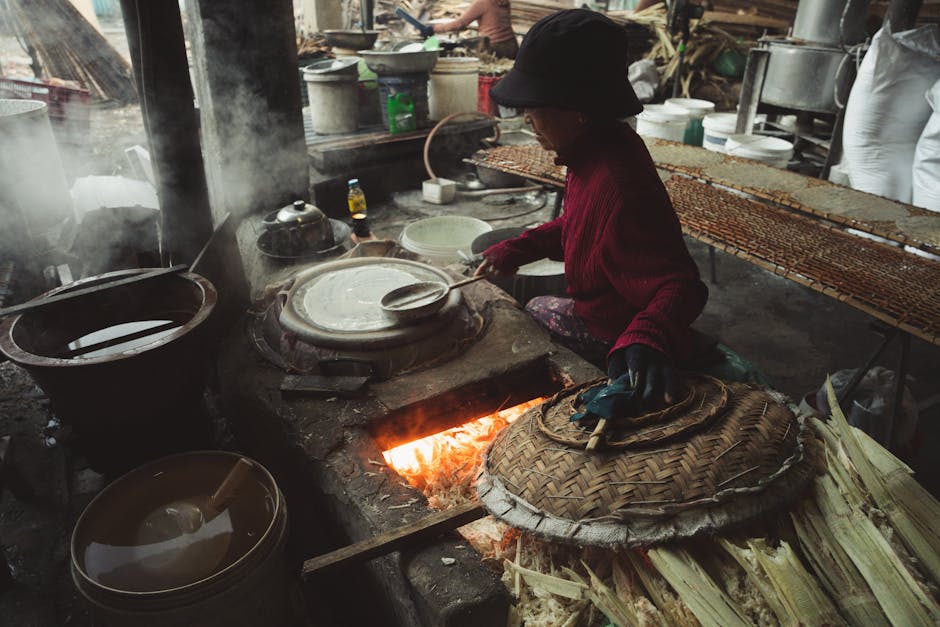Craving the vibrant flavors of Thailand? Look no further! This recipe offers a step-by-step guide to creating authentic and incredibly delicious Pad Thai right in your own kitchen. Forget takeout – with this recipe, you can master the art of this iconic dish, from the perfectly cooked rice noodles to the tangy, sweet, and savory sauce. We’ll cover every detail, ensuring your Pad Thai is bursting with flavor and texture, just like you’d find on the bustling streets of Bangkok. Get ready to impress your friends and family with this easy-to-follow recipe that guarantees a truly authentic Pad Thai experience.
This Pad Thai recipe is designed for everyone, from seasoned cooks to those just starting their culinary journey. We’ll break down each step, providing clear instructions and helpful tips to ensure your success. The key to great Pad Thai lies in the balance of flavors – the sweet tamarind, the salty fish sauce, the sour lime, and the spicy chili. We’ll show you how to achieve this perfect harmony, creating a dish that’s both satisfying and unforgettable. Prepare to be transported to the heart of Thailand with every bite of your homemade Pad Thai!
Imagine the aroma of stir-fried noodles, the sizzling sounds of the wok, and the tantalizing combination of flavors – that’s the magic of Pad Thai. This recipe isn’t just about following instructions; it’s about experiencing the joy of cooking and sharing a delicious meal. Let’s get started on this culinary adventure, and create some amazing Pad Thai!
| Category | Value |
|---|---|
| Preparation Time | 30 minutes |
| Cooking Time | 20 minutes |
| Servings | 4 servings |
| Difficulty | Intermediate |
Nutrition per serving (approximate): Calories: 550, Protein: 20g, Carbohydrates: 60g, Fat: 25g. (Note: Nutritional information can vary based on specific ingredients and portion sizes.)
Before diving into the cooking instructions, let’s gather the essential ingredients for your amazing Pad Thai. The quality of your ingredients directly impacts the final flavor, so choose wisely!
| Ingredients | Quantity |
|---|---|
| Dried Rice Noodles (thin or medium width) | 8 ounces |
| Tofu, extra-firm, pressed and cubed | 14 ounces |
| Shrimp, peeled and deveined (or chicken/pork, thinly sliced) | 1 pound |
| Eggs | 2-3, lightly beaten |
| Bean sprouts | 2 cups |
| Green onions, chopped | 1/4 cup, chopped |
| Crushed peanuts | 1/4 cup, for garnish |
| Lime wedges | 4, for serving |
| Cilantro, chopped | 2 tablespoons, for garnish |
| Pad Thai Sauce: | |
| Tamarind paste | 3 tablespoons |
| Fish sauce | 3 tablespoons |
| Soy sauce | 1 tablespoon |
| Brown sugar or palm sugar | 2 tablespoons |
| Rice vinegar | 1 tablespoon |
| Chili flakes (optional) | To taste |
| Vegetable oil | 2 tablespoons, for cooking |
Cooking Instructions
- Prepare the Rice Noodles: Place the dried rice noodles in a bowl and cover them with hot (not boiling) water. Let them soak for 5-10 minutes, or until they are pliable but still firm. The soaking time depends on the thickness of your noodles; thinner noodles require less time. Drain the noodles and set them aside. Avoid over-soaking, as they will become mushy when stir-fried in the Pad Thai.
- Prepare the Tofu (if using): If using tofu, press it to remove excess water. This helps it crisp up when stir-fried. Cube the tofu into bite-sized pieces.
- Prepare the Shrimp (or other protein): If using shrimp, peel and devein them. If using chicken or pork, slice them thinly.
- Make the Pad Thai Sauce: In a small bowl, whisk together the tamarind paste, fish sauce, soy sauce, brown sugar (or palm sugar), rice vinegar, and chili flakes (if using). Taste and adjust the seasonings as needed. The sauce should be a balance of sweet, sour, and salty. This Pad Thai sauce is the heart of the dish, so taste and adjust to your preference!
- Stir-fry the Tofu and Shrimp (or other protein): Heat 1 tablespoon of vegetable oil in a wok or large skillet over medium-high heat. Add the tofu and stir-fry until golden brown and lightly crispy, about 3-5 minutes. Remove the tofu from the wok and set aside. Add the shrimp (or chicken/pork) and stir-fry until pink and cooked through (for shrimp) or until cooked through (for chicken/pork). Remove from the wok and set aside.
- Cook the Eggs: Push the cooked protein to one side of the wok. Add the remaining 1 tablespoon of oil to the empty side. Crack the eggs into the wok and scramble them quickly.
- Stir-fry the Noodles: Add the drained rice noodles to the wok with the eggs. Pour in half of the Pad Thai sauce and stir-fry for 2-3 minutes, until the noodles are well coated and slightly softened.
- Combine and Finish: Add the cooked tofu, shrimp (or chicken/pork), and bean sprouts to the wok. Pour in the remaining Pad Thai sauce and stir-fry everything together for another 1-2 minutes, until heated through and the sauce has thickened slightly.
- Add Green Onions: Stir in the chopped green onions during the last minute of cooking.
- Serve and Garnish: Divide the Pad Thai among plates. Garnish with crushed peanuts, fresh cilantro, and a lime wedge. Serve immediately. The fresh lime juice brightens the flavors of the Pad Thai beautifully.
Congratulations! You’ve just created a delicious and authentic Pad Thai dish. Enjoy this flavorful and satisfying meal!
Serving Suggestions
- Lime Wedges: A squeeze of fresh lime juice is essential to brighten the flavors.
- Crushed Peanuts: Adds a delightful crunch and nutty flavor.
- Fresh Cilantro: Provides a fresh, herbal aroma and taste.
- Chili Flakes: For those who enjoy a bit of heat, add a sprinkle of chili flakes.
- Extra Bean Sprouts: Some people enjoy a generous helping of bean sprouts for added texture and freshness.
Notes and Tips for the Perfect Pad Thai:
- Noodle Consistency: The key to perfect Pad Thai is the noodles. They should be cooked al dente – not too soft or mushy. Adjust the soaking time based on the thickness of your noodles.
- Wok or Large Skillet: A wok is ideal for stir-frying, but a large skillet will work just as well. Make sure your pan is hot before adding the ingredients.
- Tamarind Paste: Tamarind paste is the key ingredient for the authentic sour taste of Pad Thai. You can find it in most Asian grocery stores.
- Fish Sauce: Fish sauce adds a savory umami flavor. If you’re not a fan of fish sauce, you can substitute it with soy sauce, but the flavor will be different.
- Sweetness Level: Adjust the amount of brown sugar or palm sugar to your preference. Some people prefer a sweeter Pad Thai.
- Spice Level: Add chili flakes to the sauce to adjust the spice level. Start with a small amount and add more to taste.
- Protein Variations: Feel free to experiment with different proteins. Chicken, pork, or even just tofu can be used. You can also add other vegetables like carrots, bell peppers, or snow peas.
- Prep Ahead: You can prepare the sauce and chop the ingredients ahead of time to save time during cooking.
- Leftovers: Leftover Pad Thai can be stored in the refrigerator for up to 2 days. Reheat it in a skillet or microwave.
- Ingredient Quality: Fresh, high-quality ingredients are key to a great-tasting Pad Thai. Especially the shrimp, make sure it is fresh.
This Pad Thai recipe is a fantastic way to experience the flavors of Thailand. With its balance of sweet, sour, salty, and spicy, it’s a dish that’s sure to become a favorite. Enjoy making and sharing this delicious meal!
Mastering this Pad Thai recipe opens up a world of culinary possibilities. Experiment with different ingredients, adjust the flavors to your liking, and most importantly, have fun! The beauty of cooking is in the journey, and with this recipe, you’re well on your way to creating your own signature Pad Thai masterpiece.


